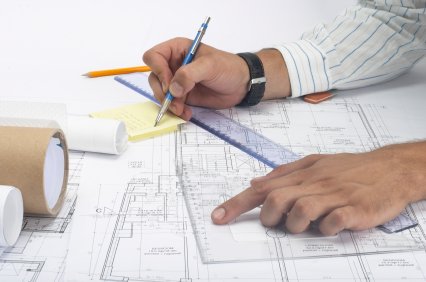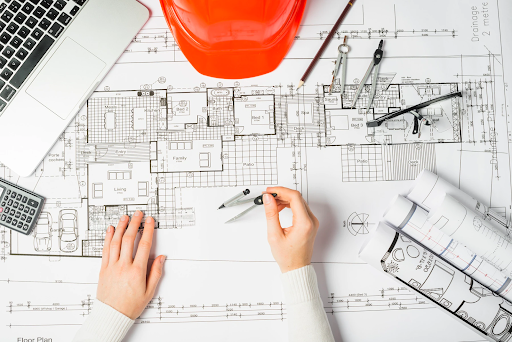Architect Checklist for Upcoming Commercial Projects
Architect Checklist for Upcoming Commercial Projects
Blog Article
Recognizing the Diverse Occupation Paths Available for Aspiring Architect
As an aspiring Architect, you have a world of career paths waiting for you. Whether you're drawn to standard design or the nuances of lasting layout, there's a specific niche that straightens with your passions.
Typical Design: Designing Structures and structures
Typical design concentrates on developing buildings and frameworks that blend performance with aesthetic allure. Your layouts can show cultural heritage, showcasing neighborhood customs while fulfilling contemporary needs.
You'll create abilities in drafting, model-making, and site analysis, enabling you to visualize and interact your ideas efficiently. Involving with customers, you'll require to understand their vision and convert it into practical styles.
In addition, building codes and sustainability practices are necessary in your job, guaranteeing your structures are risk-free and ecologically friendly. As you grow in your career, you'll locate opportunities in residential, business, and even remediation jobs, each offering distinct obstacles. Accepting standard style leads the way for a fulfilling job that admires the past while forming the future.
Urban Planning: Shaping Neighborhoods and Public Spaces
As an ambitious Architect, you can play a necessary duty as an urban organizer, changing how areas interact and operate. By utilizing area interaction strategies, you'll assure that residents have a voice fit their atmosphere. Plus, incorporating sustainable layout principles will help develop rooms that not just fulfill today's needs yet also shield the future.
Duty of Urban Planners
While several might assume of architects as the single dreamers behind structures, metropolitan coordinators play a crucial function in shaping the wider landscape of neighborhoods and public spaces. By working together with various stakeholders, you'll aid design parks, transport systems, and household locations that promote social interaction and ease of access. Your proficiency in spatial design and neighborhood characteristics enables you to picture future development while preserving cultural heritage.
Community Engagement Approaches
Efficient community engagement techniques are important for city coordinators to guarantee that the voices of locals are listened to and valued in the preparation process. To promote meaningful discussion, you need to prioritize open online forums and workshops where community participants can reveal their ideas and worries. By actively incorporating and listening feedback, you'll produce areas that mirror the community's needs, ultimately leading to more sustainable and effective urban atmospheres.
Lasting Style Concepts
When developing urban areas, including sustainable style concepts is important for creating environments that prosper both ecologically and socially. Take into consideration integrating green areas, like parks and gardens, to improve biodiversity and boost air high quality.
Creating with water conservation in mind is also key-- think of rain gardens and absorptive surfaces to take care of stormwater. Entailing neighborhood participants throughout the planning procedure assurances that the spaces you produce meet their needs and motivate social interaction. By embracing these concepts, you'll contribute to dynamic, lasting city landscapes that profit every person.

Landscape Style: Producing Sustainable Outside Atmospheres
As you check out landscape design, you'll discover crucial layout concepts that produce useful and lovely outside spaces. Lasting methods play an important role in guaranteeing these environments flourish while reducing ecological impact. Plus, you'll discover a variety of job chances that enable you to make a genuine distinction in how people interact with nature.
Style Concepts in Landscape
Understanding layout principles in landscape design is vital for developing sustainable outdoor environments that harmonize with nature. You'll need to contemplate components like scale, proportion, and equilibrium to assure your styles really feel natural and welcoming. Including indigenous plants not only boosts biodiversity however also lowers water usage, making your landscape durable. Believe about the flow of space and how individuals communicate with it; pathways and seating areas must invite exploration and relaxation. Additionally, take note of seasonal changes, developing with products that enhance the surroundings year-round (Architect). By focusing on sustainability and visual appeals, you can create exterior areas that improve the community and promote wellness. Welcoming these concepts will certainly establish a solid structure for your job in landscape design.
Sustainable Practices Summary
Lasting methods in landscape architecture not only concentrate on aesthetics however also focus on ecological health and wellness and source conservation. By incorporating native plants, you improve biodiversity and decrease the need for chemical plant foods and pesticides. Carrying out efficient irrigation systems aids conserve water and decreases runoff, safeguarding close-by communities. You can design rooms that advertise dirt health and wellness, such as utilizing organic materials and exercising permaculture concepts. Additionally, including eco-friendly infrastructure, like rainfall yards and permeable pavements, help in stormwater administration and minimizes metropolitan heat. When you create outside atmospheres with sustainability in mind, you contribute to a much healthier earth and give spaces that foster area connection. Inevitably, these practices assure your layouts benefit both individuals and the setting for years ahead.
Profession Opportunities Exploration
With a strong structure in lasting techniques, landscape style provides a selection of profession paths that permit you to make a purposeful influence on the setting. Urban planners check frequently team up with landscape designers to produce eco-friendly rooms in urban settings, improving city livability. If you're enthusiastic regarding education and learning, consider ending up being a landscape architecture instructor, motivating future generations.
Lasting Design: Focusing on Eco-Friendly Practices
As you explore your career in design, accepting green practices can establish you apart in a competitive area. Sustainable design concentrates on creating buildings that decrease environmental influence while enhancing occupant wellness. By including eco-friendly products, energy-efficient systems, and sustainable structure strategies, you'll add to a greener future.
Begin by gaining expertise of green certifications like LEED or BREEAM, which can reinforce your credentials. Take into consideration how all-natural light, air flow, and thermal effectiveness can optimize style. Collaborate with designers and environmental consultants to innovate remedies that minimize waste and preserve resources.
Do not fail to remember the relevance of neighborhood participation-- engaging local stakeholders can inspire layouts that integrate with the environment. As customers significantly focus on sustainability, your experience in green methods will not only bring in tasks however also meet your interest for responsible design. Accept this critical facet of the occupation, and enjoy your job flourish.
Historic Conservation: Safeguarding and Bring Back Cultural Heritage
While you commence on your building journey, consider the necessary role of historical conservation in preserving our social heritage. This area focuses on the security and remediation of considerable structures, sites, and structures that tell the stories of our past. By participating in historical preservation, you'll aid safeguard the building legacy that forms neighborhood identity.
As a historic conservation Architect, you'll assess historic value and assess the condition of frameworks. You'll work closely with chroniclers and conservationists to ensure genuine reconstruction techniques are utilized. This occupation course enables you to mix creative thinking with research study, allowing you to design remedies that appreciate initial products this post and craftsmanship.
Your job not just contributes to sustainability by reusing existing buildings however likewise promotes a feeling of satisfaction within areas. Embracing this course will certainly assist you come to be a guardian of history, maintaining the tales and aesthetics that enrich our lives.
Interior Design: Enhancing Indoor Spaces
Historic conservation and interior architecture both share a commitment to improving the constructed environment, but they focus on different aspects. While historical conservation stresses preserving a framework's historic and cultural worth, interior architecture absolutely nos in on maximizing indoor rooms for performance and aesthetics.
As an ambitious Architect, you'll discover that interior design allows you to mix imagination with technical skills. You'll design areas that not just look good but also advertise convenience and effectiveness. This area entails comprehending exactly how light, shade, and materials engage within an area, influencing state of mind and usability.
You'll work with numerous tasks, from household homes to industrial workplaces, ensuring that each environment satisfies the needs of its residents. By focusing on user experience, you can change insides right into inspiring and useful spaces, making a considerable influence on just how individuals engage with their surroundings. Welcome the chance to improve interior settings and form the means individuals function and live.
Industrial Design: Combining Capability With Looks
Industrial style plays a crucial function in producing products that effortlessly blend aesthetic appeals with functionality, making certain that what you use daily is not only visually enticing however additionally practical. As a hopeful Architect, you might involve on your own in this field, concentrating on designing everything from furniture to customer electronic devices. Your work entails recognizing user requirements, materials, and producing procedures, allowing you to develop ingenious options that boost daily experiences.
In find out here commercial layout, you'll frequently team up with marketers, manufacturers, and engineers, making sure that your styles are not just stunning but likewise viable. This career course provides a vibrant atmosphere where imagination meets usefulness, making it a fulfilling option for engineers interested in forming the items of tomorrow.
Frequently Asked Inquiries
What Educational Certifications Do I Required to End Up Being a Designer?
To end up being an engineer, you'll require an expert degree in style, usually a Bachelor's or Master's. Furthermore, you'll need to finish an internship and pass the Architect Enrollment Exam to practice legitimately.
Exist Certification Demands for Various Building Profession Paths?
Yes, there're accreditation requirements for numerous architectural paths. Architect. You'll need to pass exams, full internships, and occasionally pursue specialized training, depending upon your selected focus, like landscape style, city design, or historic conservation
What Software Application Skills Are Necessary for Architects Today?

Exactly How Can I Gain Practical Experience While Researching Design?
You can get useful experience by interning at building firms, joining style competitors, volunteering for community tasks, or teaming up with schoolmates on real-world projects. These opportunities boost your skills and construct valuable links in the sector.
What Task Opportunities Exist Outdoors Traditional Architecture Firms?
You can explore various task chances outside conventional style companies, like city planning, indoor layout, landscape design, building and construction administration, realty growth, or perhaps functions in sustainability consulting. Each deals unique challenges and rewards.
Whether you're attracted to conventional architecture or the nuances of lasting design, there's a particular niche that aligns with your passions.When creating city rooms, including sustainable layout concepts is vital for producing settings that grow both ecologically and socially.As you discover landscape architecture, you'll uncover important layout principles that create functional and stunning exterior areas.Comprehending layout principles in landscape design is essential for producing sustainable exterior settings that balance with nature.In industrial design, you'll usually team up with engineers, marketing experts, and suppliers, ensuring that your layouts are not only attractive however additionally possible.
Report this page